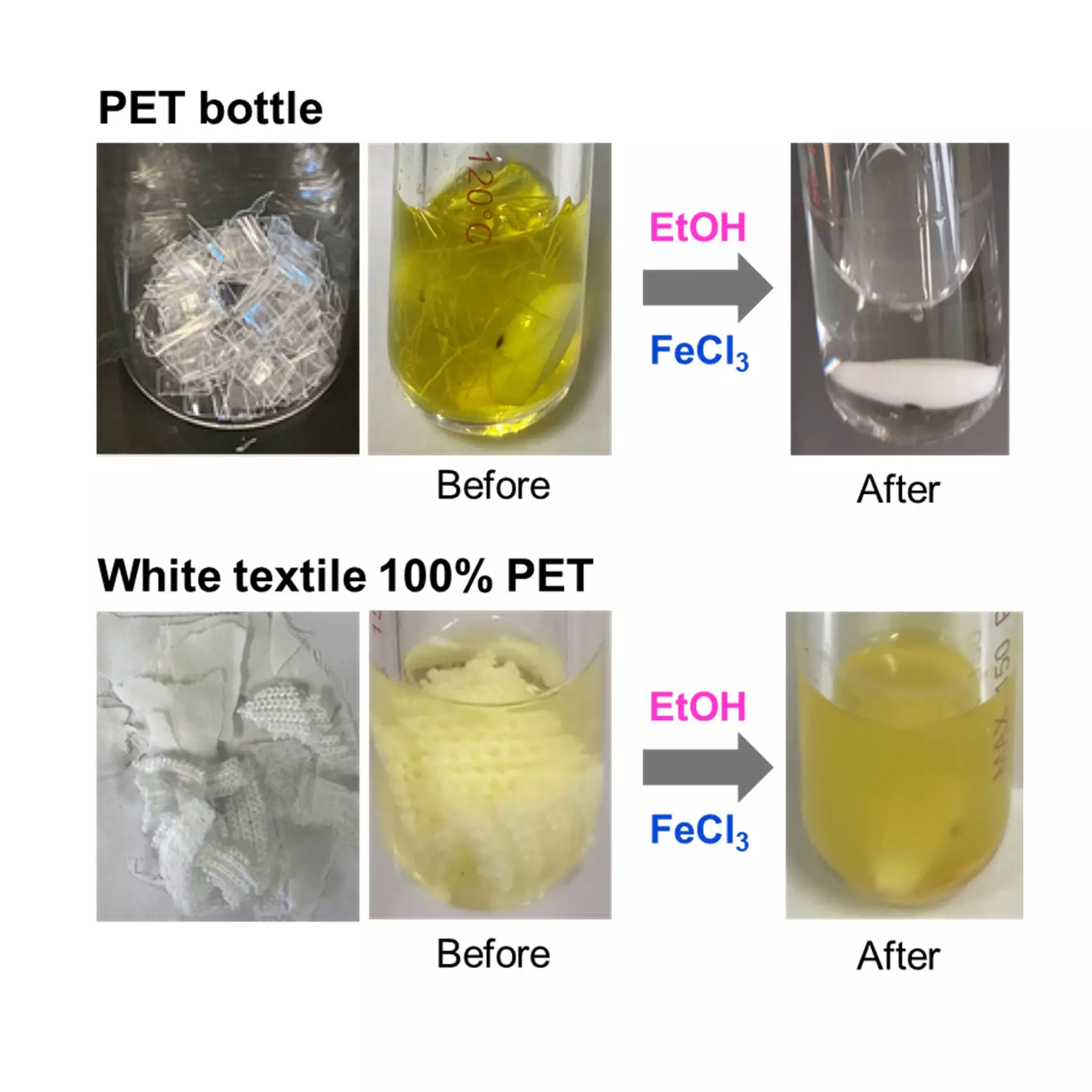The proliferation of plastic usage has led to a corresponding crisis in environmental sustainability, particularly with polyethylene terephthalate (PET), a commonly used polymer. With its widespread use in textiles and beverage containers, PET waste accumulation presents a formidable challenge to recycling efforts. Traditional approaches to PET recycling often falter due to their reliance on high temperatures and caustic chemicals, which complicate the recycling process. The search for more efficient and eco-friendly methods has gained momentum, prompting innovative research efforts.
Recently, a team from Tokyo Metropolitan University, under the leadership of Professor Kotohiro Nomura, has made significant strides in addressing this issue. They propose a novel method for breaking down PET into its fundamental components using alcohols and an iron trichloride catalyst. This innovative technique may revolutionize the chemical recycling landscape, enabling effective recovery of valuable resources from half-recycled and mixed-waste streams.
The research, published in the journal *Industrial Chemistry & Materials*, details how ethanol, in conjunction with iron trichloride or bromide, can achieve a remarkable 98-99% selectivity in recovering diethyl terephthalate (DET) and ethylene glycol (EG)—the fundamental building blocks of PET.
What sets this approach apart is the use of iron trichloride, a catalyst that is both cost-effective and readily available. Unlike traditional petrochemical processes that require expensive and rare metals, the reliance on iron provides a sustainable angle within industrial applications. Operating at moderate temperatures ranging from 160 to 180°C, this method overcomes the limitations of previous techniques that necessitated severe heating and aggressive chemicals.
Furthermore, the selective recovery of cotton mixed with PET during the depolymerization process represents a marked improvement in efficiency. Not only does this method facilitate the extraction of valuable resources from PET waste, but it also maintains the integrity of the cotton material, preventing it from being irretrievably lost in the recycling process.
One of the most promising implications of this research is its application to textile waste, a sector that often lags in effective recycling solutions. The mixed nature of textile waste, typically composed of various materials, presents a unique challenge for recyclers. With this new method, it is now possible to selectively depolymerize polyester from mixed textiles, opening up new pathways for managing textile waste sustainably.
Such advancements are vital in the context of growing environmental regulations and social pressures to enhance recycling efficiency and reduce waste. The potential to create a circular economy through the exclusive chemical recycling of textile waste underscores the significance of this research.
The development of a straightforward, environmentally friendly method for depolymerizing PET holds significant promise for transforming recycling practices. As the world grapples with unprecedented levels of plastic waste, findings from Professor Nomura’s team could catalyze a new era of recycling, ensuring that valuable materials are not wasted. This remarkable advancement not only addresses immediate environmental issues but also fosters a sustainable future, positioning chemical recycling as a pivotal strategy in the fight against plastic pollution. With continued research and application, this innovation could lead to tangible solutions and establish a clean environment for future generations.

